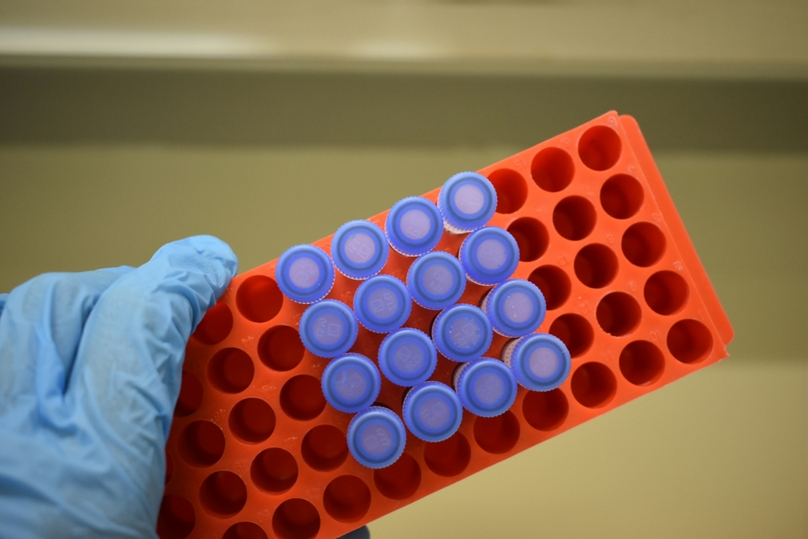What is HIPAA?
The Health Insurance Portability and Accountability Act (HIPAA) is a federal law enacted in 1996 that sets national standards. It is enforced by the Department of Health and Human Services (HHS) Office for Civil Rights (OCR). HIPAA’s primary purpose is to improve the sharing of healthcare information and to regulate how Protected Health Information (PHI) is maintained and protected from fraud. The HIPAA privacy rule affects all covered entities including healthcare providers, pharmacies, health insurers and other providers of health plans, healthcare clearinghouses, and clinical research facilities related to patient care and healthcare organizations.
PHI information may include a wide range of medical records and healthcare data in paper or electronic form, such as:
- Medical history
- Social security number
- Demographic data
- Test and lab results
- Mental health conditions
- Insurance details
HIPAA regulations have been modified to accommodate advances in health information technology and changes to working practices within healthcare. For example, because of the prevalent use of Electronic Protected Health Information (ePHI), new security risks demand the addition of higher security standards, such as cybersecurity. This is important not only to retain privacy practices but also to avoid data breaches such as ransomware.
As a manager of a research laboratory in a medical or health-related field, you must understand why and how you have to comply with the Privacy Rule. This way you can protect patient data, maintain high-quality cybersecurity, and avoid HIPAA violations.
In this article, we will discuss why your lab must stay compliant with HIPAA and explain how a LIMS can help you meet HIPAA regulatory standards.
Why Must Labs Stay HIPAA Compliant?
Under HIPAA requirements, clinical laboratory results are considered PHI. This means that labs must implement the required safeguards to ensure the integrity, availability, and confidentiality of all lab results. The required rules fall into three different categories. These are:
- Physical safeguards: These HIPAA security rules require that all physical facilities that employ personnel, subcontractors, and business associates implement policies and procedures for authorized access to PHI data systems. There are also mandates for securing the physical location, such as alarm systems and facility access protocols.
- Technical safeguards: These mandates require policies and procedures to prevent any unauthorized destruction or alteration of electronic PHI. The installation of antivirus software, firewalls, and safety patches on all networks and electronic devices is also required. The use of secure passwords also ensures full access control.
- Administrative safeguards: These rules require labs to implement HIPAA and train all personnel regarding its requirements. Labs must also develop a remediation plan, perform regular self-audits, and have signed business associate agreements (BAAs) to facilitate incident tracking and response.
How to Follow HIPAA Compliance Regulations
Ensuring your commitment to HIPAA means making it as easy as possible for your lab team to comply with the regulations. This begins with providing adequate training for all personnel so that they not only understand the importance of HIPAA but also know how to adhere to it. You should also limit access to PHI to those members of your team who need this information. Here are some other steps you can implement to follow HIPAA compliance.
Invest in a Laboratory Information Management System
If you haven’t already invested in a laboratory information management system (LIMS), it’s time to consider it. This is a software solution that enables users to manage test results, sample inventory and tracking, and all clinical data from a unified digital interface. It can be accessed from anywhere with an internet connection, by any team member who has authorized access.
So, how can LIMS help you ensure that your lab follows HIPAA compliance regulations? It can do so in the following ways:
- Organization: Because a LIMS helps you maintain accurate records that can be updated in real-time, you will always have a complete timeline of the chain of custody, from the moment you receive each sample through its storage cycle, testing procedures, and final disposal.
- Error reduction: All labels can be barcode and data can be stored automatically, so there is no human error in writing or reading label information as there often is with hand documentation. This also eliminates data altering, driving accuracy, consistency, and accountability.
- Full Transparency: Because all data is visible and shareable, it is easy to compile reports. All stored information is available across multiple data maps and time points so it can be used to improve quality or track an audit trail.
- Best practices: Because all lab team members have access to the same tools from their workstations, everyone is on the same page and can keep up with compliance regulations at all times. KPIs can be monitored, and any necessary adjustments can be made in real-time while avoiding unauthorized access to the system.
Establish a Compliance Committee
Data protection is a top priority at all costs. You can add an extra level of assurance to your lab’s HIPAA fulfillment by establishing a compliance committee. You can choose members of your team to operate the committee and designate how often they will meet. They may meet in person or in a virtual space. The purpose of the committee is to:
- Draft and distribute any formal HIPAA compliance documents
- Discuss any changes within the lab that may affect HIPAA compliance
- Be aware of and look out for common HIPAA violations
- Assess security measures and provide risk assessment
- Highlight areas where compliance is weak
- Recommend any improvements
If you choose to establish this type of compliance program, you can rest assured that you have an extra level of protection for your individually identifiable health information.
Regularly Review Regulations
HIPAA compliance training is mandatory for lab personnel who are operating in the medical or healthcare industry. According to the guidelines for HIPAA training, all employees should be offered refresher training “periodically.” While this is rather vague, it is in your best interest to make sure your personnel attend refresher courses regularly. That way, you can be sure that your team members are always aware of any changes or amendments to the HIPAA regulations. Online training offers a great route for refresher training and can help you stay within your budget.
Quickly Address Issues
It’s best to avoid any breaches of compliance rather than have to deal with one, but in rare cases, a transgression can happen. In this case, the most important thing to do is respond quickly. Following this protocol will ensure you regain control as soon as possible:
- Stop the breach: Acting as quickly as possible can help to mitigate the negative effects. You must cut off unauthorized access to PHI immediately and ensure it will not be further transgressed. Track the breach as far as possible via your LIMS.
- Report the incident: The incident should be reported to HIPAA and any persons involved in the HIPPA violation, under the HIPAA breach notification rule. You will need to make a full report detailing how and when the patients' data was disclosed, and the content and amount of the data disclosed.
- Investigate fully: You must be able to confirm how the disclosure of PHI happened, to prevent a recurrence. You must also investigate any persons or bodies that may have received the PHI improperly. Any other witnesses or involved parties must also be documented.
- Mitigate the effects: This may entail one or more procedures including destroying the disclosed information, revaluating access to your patient database, changing passwords, and upgrading security.
- Make corrections: Providing that the breach was unintentional, and you correct the issue within 30 days, you may avoid HIPAA penalties. Although you cannot undo the breach, you can prevent it from happening again.
Stay HIPAA Compliant with Genemod’s LIMS Software
As we’ve seen, a LIMS can make it much easier for you to monitor your lab’s HIPAA compliance, meet all HIPAA security rules, and keep your EHRs secure.. Here at Genemod, we have developed a LIMS that is not only designed to help you maintain HIPAA compliance but is also customizable to suit your other research needs. Contact us today for a full demonstration.


















